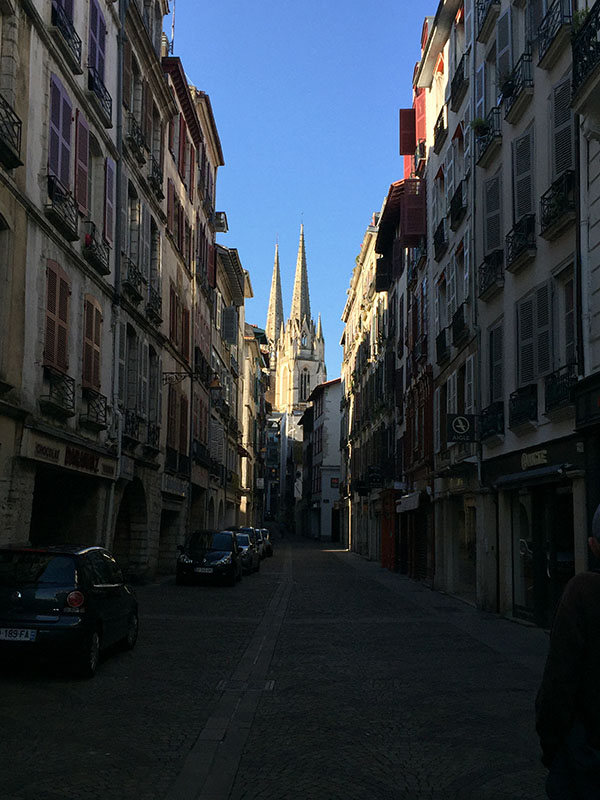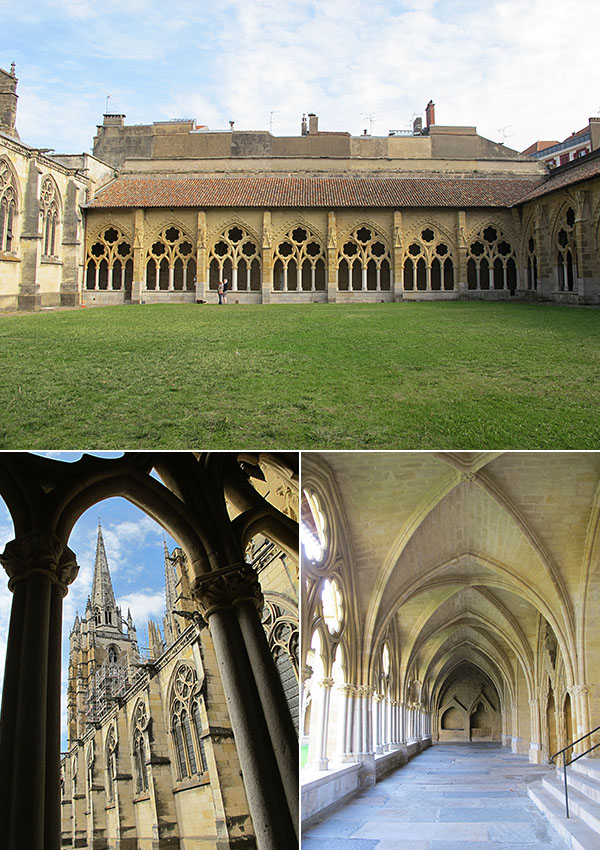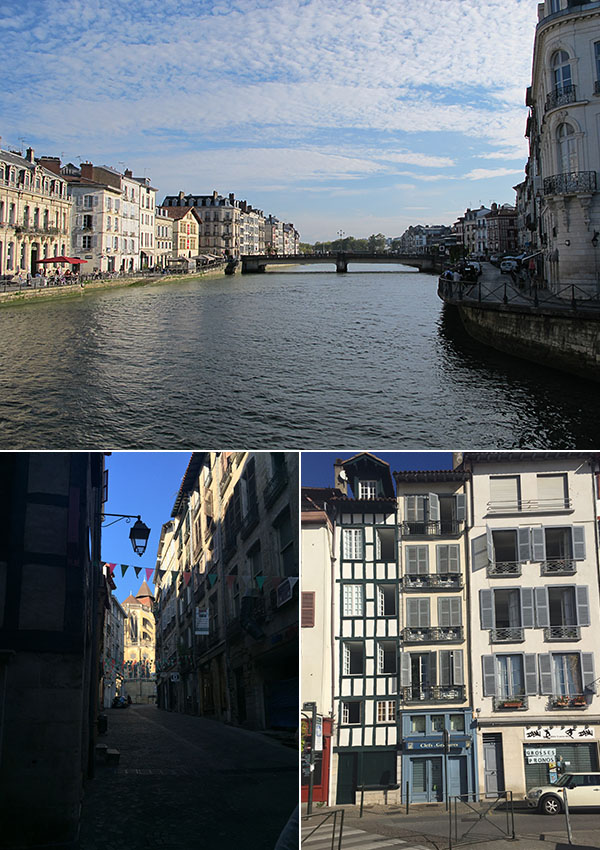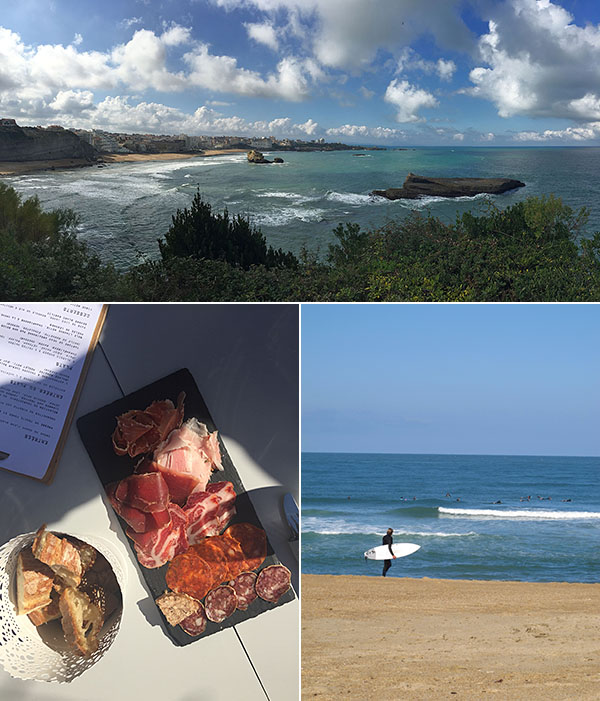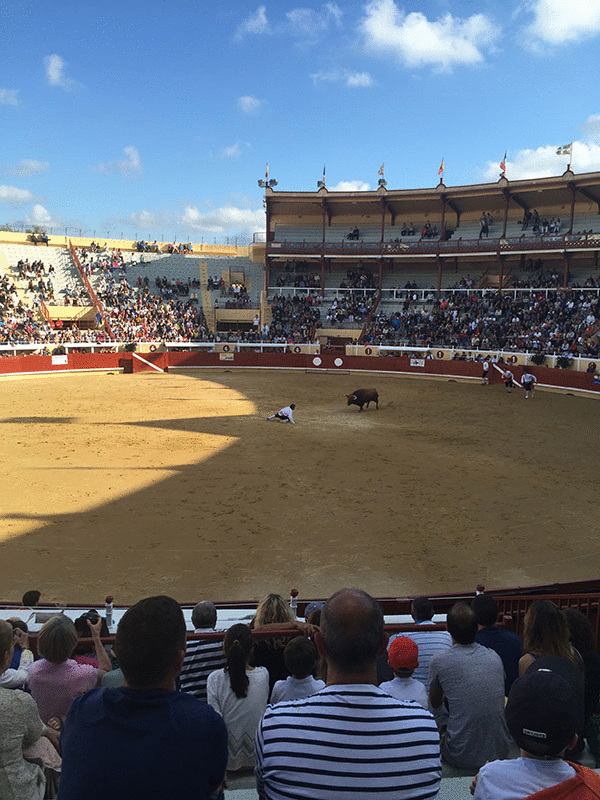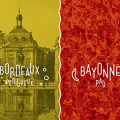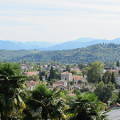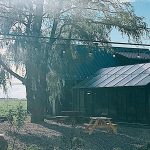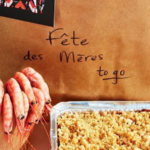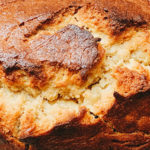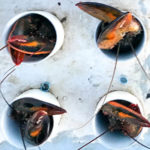After spending two days in Pau, Marie-Ève and I boarded a train for the one-hour ride to Bayonne where we were greeted with a tuk-tuk ride around town. It was a great way to enjoy the sunshine and learn about Bayonne and its two confluent rivers–the Nive and the Adour. After freshening up at Le Grand Hôtel–our home for the next two days–we embarked on a guided walking tour of the historic center of Bayonne. Old Bayonne’s typical Basque architecture is lovely and a bit reminiscent of Amsterdam with its tall and narrow façades. The buildings are mostly white with wood shutters and timbering in shades of red, blue or green. Ox blood used to be used traditionally to paint the red wood accents. The heavy fortifications around the city and the interdiction for residents to set up house outside of them resulted in having to build taller buildings and great spiralling staircases. You can walk along the remnants of the old fortifications all around the historic center and the stroll will eventually lead you to the top of the hill and the imposing gothic Sainte-Marie Cathedral with its charming cloister (where I saw a couple walking their cat!). Take the time to visit the cathedral, an absolutely breathtaking example of gothic architecture, and if you do decide to take the tour of historic Bayonne, your guide will tell you all about the fascinating history of some of France’s most legendary rulers who thrived in Bayonne. Once you go back down the hill to the shores of the Nive, walk along the water and admire the lovely buildings’ reflections.
Our guide Andy informed us that Bayonne is the historic chocolate capital of France, which means that it was the first city in France where chocolate was consumed for pleasure by everyone. To prove this point, Andy brought us on a tour of the many chocolate and pastry shops of Bayonne, starting with Maison Paries, a must stop if you have a sweet tooth like I do. The pastry shop specializes in Basque sweets, including kanougas, the house’s oldest specialty (a soft caramel and chocolate mix), mouchous (macaron-like desserts without the filling) and of course, gâteau basque (the cream-filled classic is the best). It seems like Bayonne’s historic center has a chocolate shop on every corner and I encourage you to visit them all and to try some of the Espelette-flavoured dark chocolate that you’ll find in many of the stores. The hot chocolate at Chocolat Pascal on the other side of the Nive is especially delicious.
If you ever do make it to Bayonne, then you absolutely have to make your way to Biarritz and Anglet and their breathtaking beaches. There’s a reason why they are among Europe’s best seaside destinations. We spent a couple of hours on the wide sandy beach of Anglet watching the surfers dance on the waves. This is a surfer’s paradise and a great spot to learn or ride. The beaches are flanked by a few beach side restaurants serving casual food and a few specialties like local charcuterie, including the famous jambon de Bayonne.
Bayonne feels very “Spanish” especially when you’re sitting in an arena watching bulls running. No worries, it wasn’t a regular corrida since the animals weren’t harmed in any way. Bayonne is the oldest bullfighting town in France with a first Spanish-style bull run dating back to 1289. They are very proud of this tradition but I wouldn’t have attended if they hadn’t reassured me that the animals wouldn’t be hurt in this “recordation”, which consists of teasing the bull into charging and then waiting until the last possible minute before moving away to avoid the bull. The championship we witnessed started with young kids and cows and escalated to older matadors and heavier bulls. It was strangely fascinating watching the matadors narrowly get missed by the charging bulls over and over again but I felt bad for the animals who got increasingly frustrated and exhausted. I’d rather walk around town and eat some chocolate.
I haven’t mentioned any restaurants yet. We spend one of our evenings in Bayonne at a cooking class at the Plancha Academy where we learned to cook a la plancha. The food we prepared was memorable and so was the wine and the company, a group of strangers who ended up being the best dinner companions. Our second evening was spent having dinner by the water at Chez Gilles where we sampled some local cuisine in a beautiful setting.
::::::::::::::::::::::::::::::::::::::::::::::::::::::::::::::::::::::::::::::::::::::::::::::::::::::::::::::::::::::::::::::::::::::::::::::::::::::::::::::::::::::::::::::::::::::
While in Bayonne, we stayed at Le Grand Hôtel, conveniently located right in the heart of the historic center of town.
Many thanks to the France Tourism Office, Air France and Tourisme Bayonne for making this trip possible and so much fun! And a special thanks to Rail Europe who provided us with a complimentary France Rail Pass so we can get back to Paris comfortably.
Many thanks also to My WebSpot, a great pocket WiFi device that allowed me to be connected at all times while in France.
For more photos of my trip, head over to my Facebook album, and take a look at my post on Pau near the Pyrénées where I stayed for two days prior to Bayonne.


